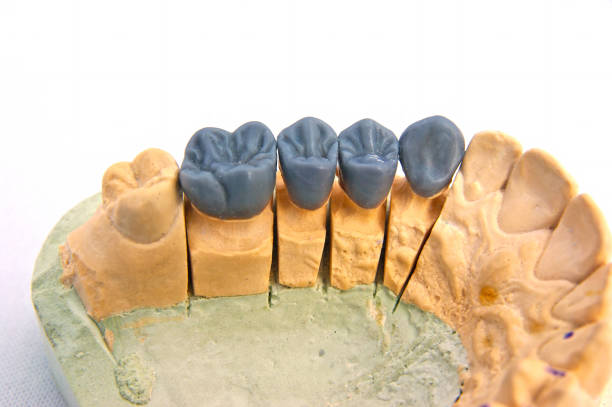Temporary dental crownsprotect teeth or dental implants while a permanent crown is in production. Dentists recommend crowns in several circumstances. For example, individuals may require a crown if they need a large cavity filling but do not have enough of a tooth remaining to keep a filling in place. Someone may also require a crown over a tooth to prevent further damage after a root canal.
In this article, we examine temporary dental crowns and their uses. We also look at how dental offices make them, how long they last, and how to care for them.
When are they needed?
Dental crown caps cover the remains of teeth that have sustained damage from excessive decay, root canal treatment, or other repairs. They may protect single or multiple teeth.
Dentists may take impressions or models of the person’s original tooth for the crown. They may also use computer imaging technology to determine the crown’s appropriate size and shape. They will then send the impressions or imaging to a dental laboratory.
Research indicates that the development and placement of a temporary crown plays an important role in long-term outcomes for permanent dental crowns.
The functions of a temporary crown include:
- safeguarding the remnants of the natural tooth or implant site and the gums
- preventing potential tooth and gum sensitivity
- keeping the appropriate spacing between the teeth
- supporting chewing and esthetics
The functions of a permanent crown include:
- covering an implant or the remnants of severely decayed, discolored, or misshapen teeth
- protecting the weakened tooth
- supporting dental bridges if replacing missing teeth
Caring for the crown
An individual with a temporary crown should maintain a regular oral hygiene routine and make extra efforts to clean the surrounding area. This will help prevent bacteria from slipping between the crown and the gum line, causing the covered tooth to decay.
A goodoral hygiene routine involves brushing the teeth at least twice each day and flossing the teeth at least once each day.
To avoid dislodging a temporary crown, a person should brush their teeth more gently around the temporary crown and use extra care when flossing around it.
Anyone who experiences discomfort around the temporary crown should call a dentist and schedule an appointment.
Procedure
Fitting a temporary crown may involve the dentist:
- filing down the decayed or damaged tooth on the top and sides to make space for the temporary crown
- removing any decay from underneath an old filling in the tooth
- placing a composite core on the tooth if it has undergone a root canal and there is not enough tooth remaining
- adding filling material to build a structure for the crown to cover or patch any holes in the remaining tooth
- applying paste or putty to make an impression or mold of the tooth
- making impressions of the teeth to help maintain the person’s bite
- using the impressions of the upper and lower teeth to make a stone model of a person’s teeth
- using a shade guide to identify the exact color needed for the permanent crown to match the surrounding teeth
- making a temporary crown from acrylic or composite resin plastic using the impressions
- using adhesive to attach the temporary crown to the filed tooth
- sending the impressions to a dental laboratory that makes permanent crowns
- scheduling a second appointment in 2–3 weeks to remove the temporary crown and cement the permanent crown in place
Summary
Temporary dental crowns protect teeth, dental implants, and gums from bacteria while people wait for their permanent crowns from a dental laboratory. The temporary crowns also prevent the tooth from moving before the permanent crowns arrive.
As dental offices make temporary dental crowns from less substantial materials than permanent dental crowns, they are more likely to crack or break. They are also more prone to falling out because dentists do not cement them into place as securely as permanent crowns.









